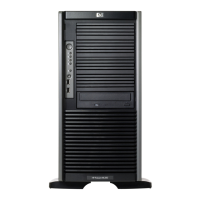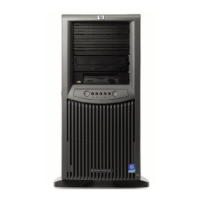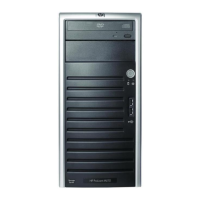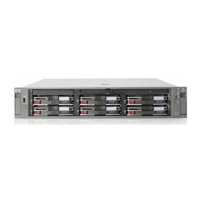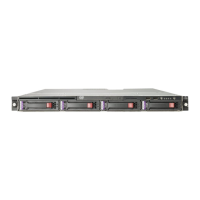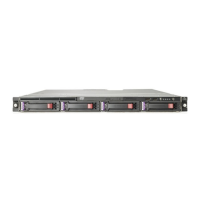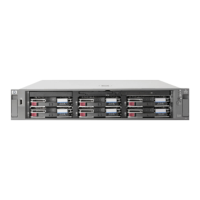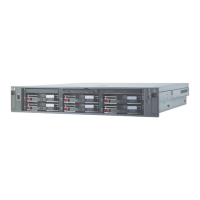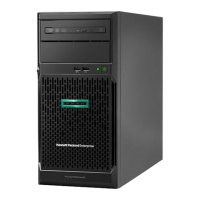
Do you have a question about the HP ProLiant ML30 Gen10 and is the answer not in the manual?
| Bus type | DMI3 |
|---|---|
| Tjunction | 100 °C |
| Scalability | 1S |
| Processor cache | 8 MB |
| Processor model | E-2124 |
| System bus rate | 8 GT/s |
| Processor socket | LGA 1151 (Socket H4) |
| Processor threads | 4 |
| Processor codename | Coffee Lake |
| Execute Disable Bit | Yes |
| Processor frequency | 3.3 GHz |
| Processor cache type | Smart Cache |
| Processor lithography | 14 nm |
| Processor manufacturer | Intel |
| Processor package size | 37.5 x 37.5 mm |
| Processor boost frequency | 4.3 GHz |
| Processor operating modes | 64-bit |
| Embedded options available | No |
| PCI Express configurations | 1x16, 2x8, 1x8+2x4 |
| Supported instruction sets | AVX 2.0, SSE4.1, SSE4.2 |
| Thermal Design Power (TDP) | 71 W |
| Number of processors installed | 1 |
| Maximum number of PCI Express lanes | 16 |
| Memory types supported by processor | DDR4-SDRAM |
| Memory clock speeds supported by processor | 2666 MHz |
| Memory bandwidth supported by processor (max) | 41.6 GB/s |
| Maximum internal memory supported by processor | 128 GB |
| On-board graphics card model | - |
| Internal memory | 8 GB |
| Maximum internal memory | 64 GB |
| Memory layout (slots x size) | 1 x 8 GB |
| HDD size | - \ |
| Supported HDD sizes | 3.5 \ |
| Total storage capacity | 0 GB |
| Maximum storage capacity | - TB |
| Number of HDDs installed | 0 |
| USB 2.0 ports quantity | USB 2.0 ports have a data transmission speed of 480 Mbps, and are backwards compatible with USB 1.1 ports. You can connect all kinds of peripheral devices to them. |
| Ethernet LAN (RJ-45) ports | 2 |
| USB 3.2 Gen 1 (3.1 Gen 1) Type-A ports quantity | 5 |
| Chassis type | Tower (4U) |
| Product color | Black |
| Power supply | 350 W |
| Ethernet interface type | Gigabit Ethernet |
| PCI Express slots version | 3.0 |
| Processor ARK ID | 134856 |
| Intel Secure Key Technology version | 1.00 |
| Depth | 475 mm |
|---|---|
| Width | 175 mm |
| Height | 368.3 mm |
Identifies front panel ports, bays, LEDs, and buttons, including power and health indicators.
Lists power fault codes and their corresponding LED behavior for system subsystems.
Identifies rear panel power supplies, network ports, USB, VGA, expansion slots, and LEDs.
Illustrates and labels connectors, switches, slots, and ports on the system board.
Guides on interpreting DIMM labels and illustrates DIMM slots, and defines PCI expansion slot specifications.
Explains drive bay numbering, LEDs, and status, and fan numbering and behavior.
Provides descriptions of the functions for each position of the system maintenance switch.
Provides information on the type and usage of media device screws for drive installation.
Describes the procedures for powering the server on and off using different methods.
Details steps for extending, removing, and sliding the server into and out of a rack.
Provides instructions for removing and installing the front bezel, access panel, and air baffle.
Explains how to remove the PCI slot blank retainer and the PCI slot blank itself.
Guides on positioning the tower server for hardware configuration and for operation.
Outlines options for initial system installation, including professional service or self-setup.
Describes the benefits and scope of the HPE Installation Service.
Provides prerequisites, unboxing, hardware installation, orientation, management, and OS deployment steps.
Details temperature and humidity ranges for server operation and non-operation, including altitude derating.
Details electrical regulations, power supply considerations, and proper grounding procedures for the server.
Covers crucial safety warnings for rack installation, server handling, and preventing electrostatic discharge.
Explains the options available during the Power-On Self-Test (POST) screen for system configuration.
Provides general guidelines and warnings for installing hardware options, including grounding and timing.
Details the process of converting the server to rack mode, including installing rails and the server tray.
Explains expansion board options, thermal requirements, and the procedure for installing expansion boards.
Covers drive installation guidelines, supported drives, and procedures for LFF/SFF non-hot-plug and hot-plug drives.
Provides instructions for installing SAS LTO tape, USB RDX, optical, and LFF non-hot-plug media devices.
Covers DIMM population rules and the procedure for installing memory modules.
Details the installation of M.2 SSDs and serial port enablement boards and cables.
Explains supported storage controllers and the procedure for installing a Smart Array standup controller.
Describes energy pack options, firmware requirements, and the installation process for batteries and capacitors.
Guides on installing internal USB devices using the dedicated internal USB ports.
Covers the installation and enabling of the HPE TPM 2.0 Gen10 Kit, including recovery key retention.
Details whether utilities operate in online, offline, or both server modes.
Covers HPE iLO 5 features, federation, APIs, management tools, and the Integrated Management Log.
Explains Intelligent Provisioning for server setup and its operational components.
Details UEFI utilities for system configuration, boot modes, secure boot, and the embedded shell.
Describes HPE Smart Storage Administrator for configuring arrays on Smart Array controllers.
Details procedures for updating firmware, drivers, and system software using various HPE tools.
Guides on accessing support, ClearCARE, updates, self-repair, remote support, and providing documentation feedback.
Details temperature and humidity ranges for server operation and non-operation, including altitude derating.
Lists physical dimensions (height, depth, width) and approximate weights for different server models.
Provides input requirements, efficiency, and output ratings for various server power supply options.
Lists general and product-specific websites for additional information and resources.
